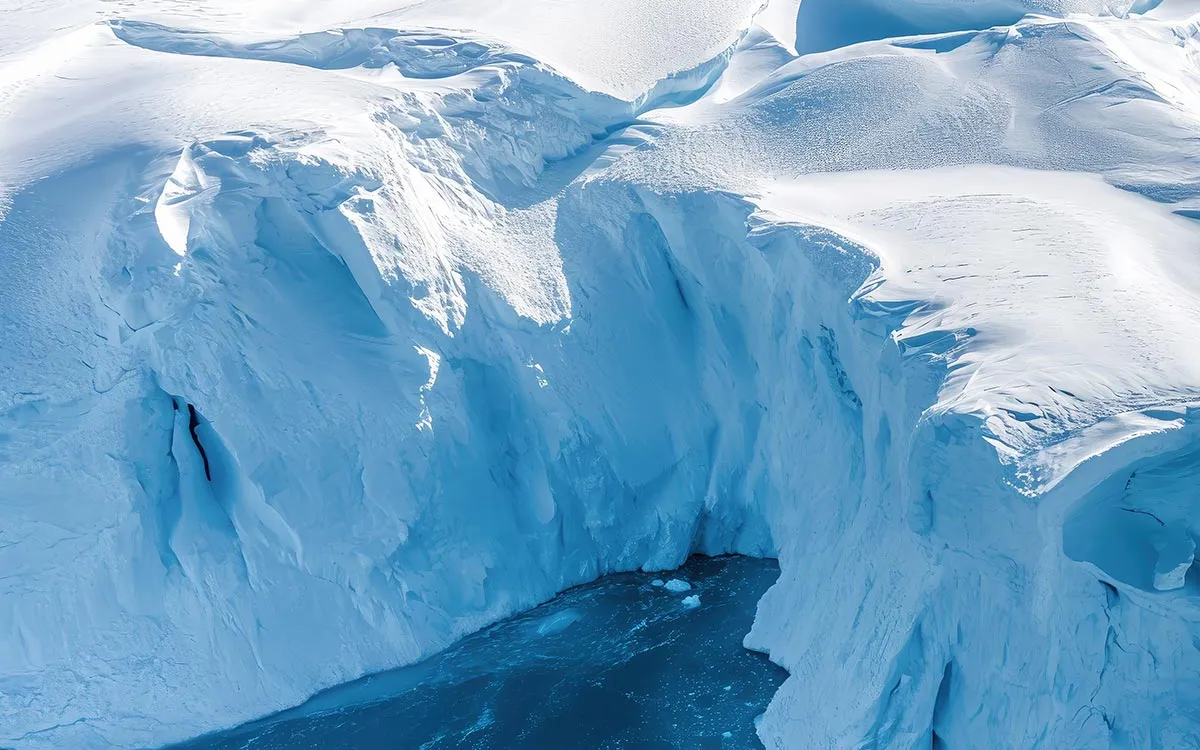
A significant transformation is occurring in the waters surrounding Antarctica as scientists report that the Southern Ocean is becoming increasingly saltier at an alarming rate. This dramatic change is facilitating the rise of deep, hidden heat, which is melting the sea ice from below. Since 2015, Antarctica has lost an amount of ice equivalent to the entire landmass of Greenland. Even more astonishingly, a massive hole in the sea ice, which had been absent for 50 years, has re-emerged, leading to faster warming, more intense storms, and dire consequences for wildlife that relies on the ice.
Recent research has uncovered a startling and unexpected shift in the Southern Ocean, marked by rising surface water salinity and a steep decline in sea ice. The loss of sea ice in Antarctica since 2015 is on a scale unmatched in recent decades, equivalent to the size of Greenland. This trend represents one of the most significant environmental changes observed globally. Previously, the ocean's surface was becoming less salty, which supported the growth of sea ice. However, scientists now indicate that this trend has dramatically reversed.
Utilizing European satellite data, a team led by the University of Southampton has identified a sudden increase in surface salinity south of 50° latitude. This rise in salinity coincides with a significant decrease in sea ice around Antarctica and the unexpected reappearance of the Maud Rise polynya in the Weddell Sea—a vast hole in the sea ice that is nearly four times the size of Wales and has not been observed since the 1970s. These crucial findings were published on June 30 in the Proceedings of the National Academy of Sciences.
Dr. Alessandro Silvano from the University of Southampton, the lead researcher on this study, explained, “Saltier surface water allows deep ocean heat to rise more easily, melting sea ice from below. It’s a dangerous feedback loop: less ice leads to more heat, which leads to even less ice. The return of the Maud Rise polynya signals just how unusual the current conditions are. If this salty, low-ice state continues, it could permanently reshape the Southern Ocean—and with it, the planet. The effects are already global: stronger storms, warmer oceans, and shrinking habitats for penguins and other iconic Antarctic wildlife.”
In the polar waters of the Southern Ocean, cold, fresh surface water typically overlays warmer, saltier waters from below. In winter, as the surface cools and sea ice forms, the density difference between these water layers (known as stratification) weakens, enabling mixing and the upward transport of heat. This process contributes to the melting of sea ice from below, thereby limiting its growth. Since the early 1980s, the surface of the Southern Ocean had been freshening, which strengthened stratification and trapped heat beneath, sustaining greater sea ice coverage. However, new satellite technology and data from floating robotic devices reveal that this trend has reversed; surface salinity is on the rise, stratification is weakening, and sea ice is reaching alarming record lows.
This is the first instance where scientists have been able to monitor these changes in the Southern Ocean in real time. Contrary to previous expectations, man-made climate change was thought to support Antarctic sea ice cover in the coming years. Aditya Narayanan, a postdoctoral research fellow at the University of Southampton and co-author of the study, noted, “While scientists anticipated that human-driven climate change would eventually lead to a decline in Antarctic sea ice, the timing and nature of this shift remained uncertain. Past projections emphasized continued surface freshening and stronger ocean stratification, which could have sustained sea ice cover. Instead, we are witnessing a rapid reduction in sea ice—an essential reflector of solar radiation—potentially accelerating global warming.”
Professor Alberto Naveira Garabato, co-author of the study and Regius Professor of Ocean Sciences at the University of Southampton, added, “The new findings suggest that our current understanding may be insufficient to accurately predict future changes. It makes the need for continuous satellite and in-situ monitoring all the more pressing to better understand the drivers of recent and future shifts in the ice-ocean system.”
For more details, refer to the study titled “Rising surface salinity and declining sea ice: A new Southern Ocean state revealed by satellites” by Alessandro Silvano et al., published on June 30, 2025, in the Proceedings of the National Academy of Sciences. DOI: 10.1073/pnas.2500440122. This research was supported by the European Space Agency.